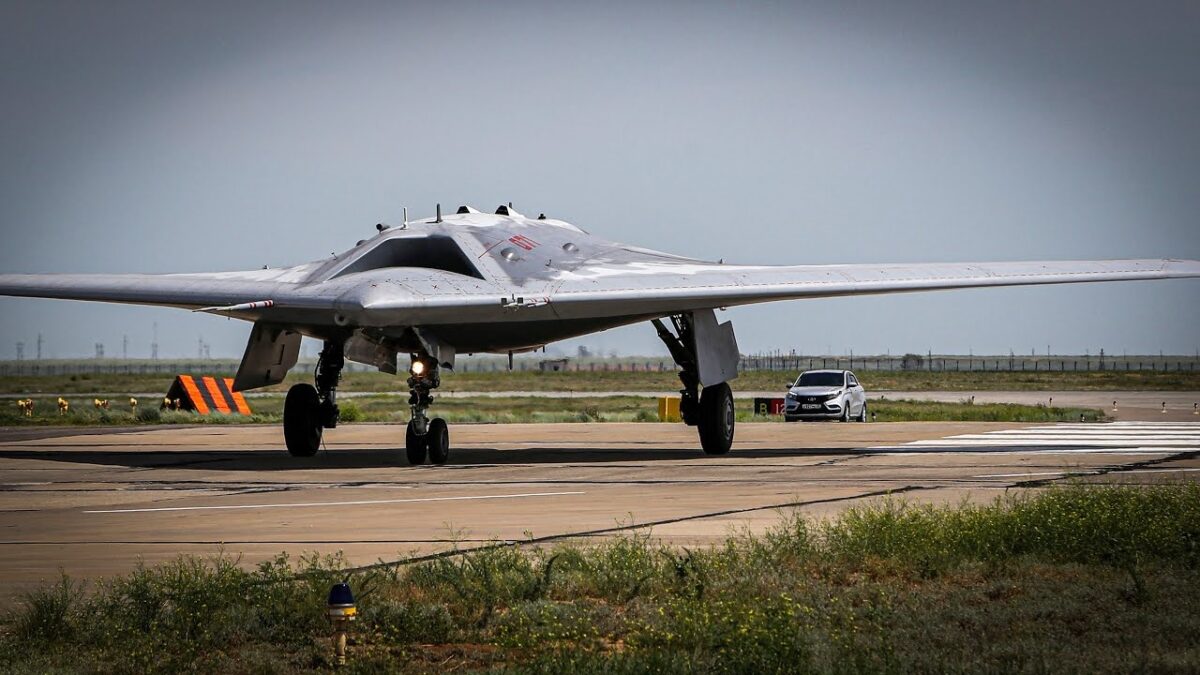2023 is right around the corner and Russia hopes its stealthy S-70 Okhotnik-B combat drone will be ready for serial production next year.
The S-70 Okhotnik may be somewhat on schedule. It has already passed one important test this summer when it successfully fired precision ground attack missiles at practice targets.
Of course, this news is released by Russian state-run media so it is not entirely reliable, but it is safe to say that this unmanned combat vehicle will enter service in numbers in the next 12 to 24 months if it can acquire spare parts and computer chips that are in short supply due to Western sanctions.
S-70: Speed It Up Already
In August, the Russian defense ministry reportedly told the unmanned craft’s manufacturer United Aircraft Corporation (UAC) to speed things up and move past “experimental design work.” The Russian military would love to have it attack Ukrainian targets during the war there, but UAC will have to put the finishing touches on the test models first.
Is This Stealth Drone a Priority?
However, one problem with the Okhotnik (Hunter) program will be money and resources.
There is a war on, and priority is being given to the Russian army as it calls up conscripts and rushes to produce more tanks and armored personnel carriers to face Ukrainian counterattacks.
The Okhotnik will have to ensure that it receives parts that are being limited by international sanctions – particularly computer microchips that are in short supply with Russian manufacturers.
These shortages may put a kibosh on future production and lengthen that milestone horizon for serial production closer to 24 months rather than 12 months.
Large Flying Wing Has Decent Specs
The Okhotnik has a flying wing design, and it is big for a combat drone – much larger than American combat models such as the Predator and Reaper.
The Okhotnik weighs around 20 tons with a wingspan of 65 feet.
The engine is likely the AL-31 or 41F, the same powerplants that are on the Su-27, Su-35, and Su-57 fighters. This gives the S-70 a combat range of 2,485 miles.
It can cruise along at 421 miles per hour. The unmanned bird also has a large payload – at 4,409 pounds. Weapons are carried in two internal weapons bays.
Inspired by American Designs
The Okhotnik has been flying since 2019, so UAC has run it through its paces since then. UAC has likely used other American combat unmanned models for inspiration such as the Boeing Loyal Wingman drone (Airpower Teaming System), Northrop Grumman’s X-47B, or Lockheed Martin’s RQ-170 Sentinel.
How Stealthy Is It Anyway?
The S-70 may not be fully stealthy since it has a jet nozzle on the rear that would increase radar detection and the chance that it could be detected by infrared sensors. But the Russians are advertising it as a stealth combat drone, nonetheless.
Loyal Wingman Teaming With Su-57 Felon
The Okhotnik could have “loyal wingman” capability with the Russian air force’s Su-57 Felon stealth fighter. This would entail the Su-57 flying on missions in which the Okhotnik could cruise ahead of a formation and conduct electronic warfare jamming and targeting missions for the Su-57s. Or the drone could stay back and fire stand-off precision-guided missiles.

S-70B. Image Credit: YouTube Screenshot.

S-70 Drone. Image Credit: Russian Media/Screenshot.

S-70 drone. Image Credit: Creative Commons.
Production Could Be Limited By Chip Shortage
All of these features will require artificial intelligence and high computing power that necessitates a steady supply of advanced microprocessors. Sanctions are affecting this supply. This would mean a delay in the Okhotnik program.
As much as Russia would love for the Okhotnik to fly missions over Ukraine it may not be ready for serial production in 2023.
Expert Biography: Serving as 1945’s Defense and National Security Editor, Dr. Brent M. Eastwood is the author of Humans, Machines, and Data: Future Trends in Warfare. He is an Emerging Threats expert and former U.S. Army Infantry officer. You can follow him on Twitter @BMEastwood. He holds a Ph.D. in Political Science and Foreign Policy/ International Relations.

